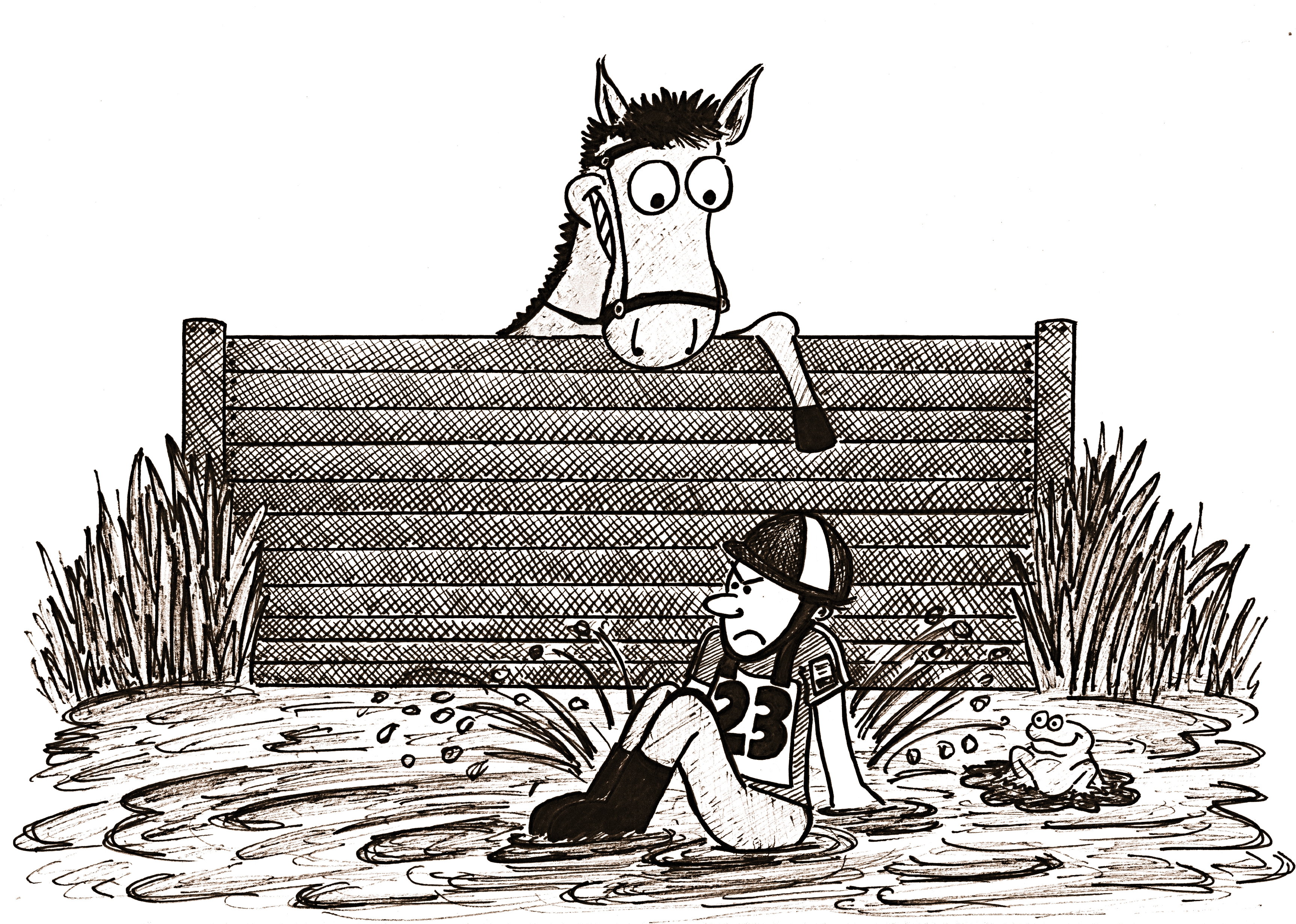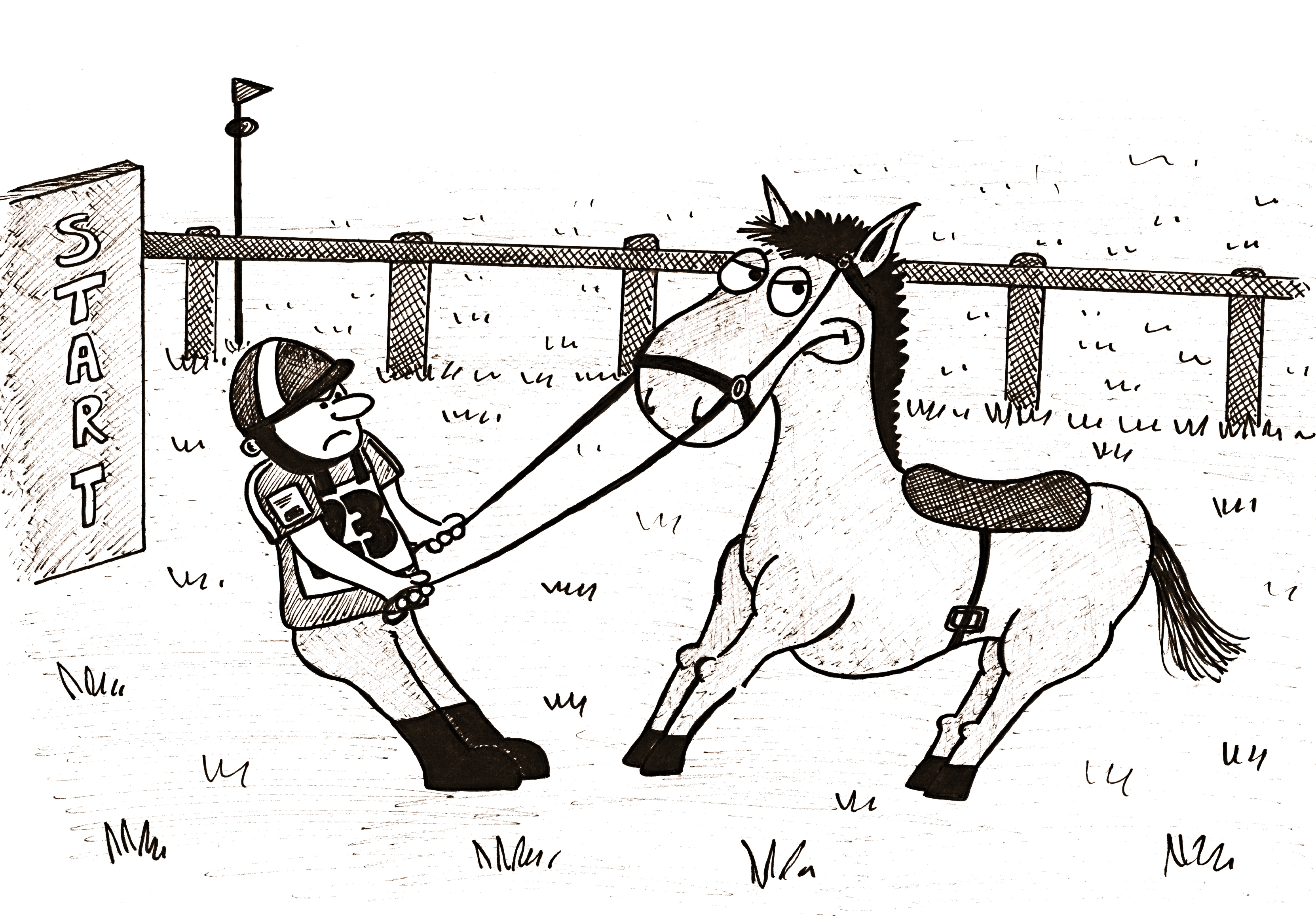The 2018 eventing season is galloping to a finish and the stunning cross-country (XC) venues being put out to pasture for another year.
The thrills and spills have entertained us, inspired us, and certainly the hotly talked about World Equestrian Games had us on the edge of our seats, adding to a thrilling and ‘event-full’ year.
Personally, I’m always moved as I feel humbled and in awe of just how amazing horses are and ALL they do for us! To jump bravely around a hugely demanding XC course and perform hoof perfectly, back to back, in the show jumping and dressage phases, is a BIG step up from quietly munching grass in a field beside your mates! Whilst rejoicing in GB’s incredible successes and debating some of the more controversial eventing news, I’d like to look back at some of the action from the horse’s point of view.
As an equine behaviour consultant, I’ve helped many clients who were experiencing challenging behaviour with their eventers, particularly with the XC phase. Despite being bred, trained and fit for their job, and mostly excelling at their jumping at home, for some it can be a very different and unhappy story when it’s time to head out on course on the big day!
Why can the most exciting phase turn into ‘CROSS’ country jumping?
It can be hugely frustrating when you’ve patiently dedicated months (and years) preparing for an event, then on the day your capable horse says ‘Thanks, but no thanks!’ Problems can crop up out on course with general unwillingness to go forward, evasions at (or even between) fences, napping to go to the start box, unresponsiveness in the warm up and even with mounting and tacking up. Even riders at the top of their field can experience these challenges from time to time!
There’s nothing more wonderful and inspiring to see than a XC partnership in sync together galloping across the country with the horse seemingly loving his job and every bit of his body language saying ‘Show me the next fence!’ At the same time there’s nothing more uncomfortable to see than a rider and horse partnership lacking harmony and ‘togetherness’. Nobody wants to see unpleasant moments, where for instance a rider resorts to force to achieve a personal goal. Punishing our horses, who may not want to ‘play ball’ on that day, is a sad moment and is simply not acceptable, in any situation. Unfortunately you may have seen moments like this for yourself or heard about such instances occurring.
The best trainers and riders will question why these behaviours happen and endeavour to understand their horses better, not only to achieve greater success but first and foremost establish a trusted partnership. This is what we all strive for with our horses and it’s essential over the rigours and risks of a XC course.
It’s all in the PREPARATION and PARTNERSHIP between rider and horse…
Behaviour can be the physical expression of the emotional state of the horse. So if we are seeing a behaviour challenge, we need to question whether we are meeting the emotional needs of the animal. The horse needs to FEEL confident and relaxed. If there is a question of trust within the horse-human partnership, or a lack of preparedness, things can go horribly wrong.
To find out why event riders can come unstuck, we need to look first at the basic nature of horses. If we momentarily strip everything away and imagine a horse in it’s natural setting, we see a grazing herbivore living within a herd. Horses are HIGHLY SOCIABLE and it’s their sociable nature that actually gives them the desire to please us, their human companions, in the first place. Lucky us!
We horse lovers know that every animal is individual. Some horses are more ‘socially inclined’ and get security and reassurance from others. Even being within sight of others can be paramount to a horse’s feeling of safety and wellbeing. You may know a horse that will graze happily alone whilst another becomes extremely agitated when in a field alone or out of sight of others.
If you consider the show jumping and dressage phases of eventing, neither the arenas nor the warm up are usually too far away from other horses. When we take our equine partner out cross country however, we are asking a highly sociable animal to leave behind the security of others that they may see as herd members in a natural survival situation. Add to that the new question that each XC fence poses to the horse as well as the high adrenalin that can exacerbate any tense feelings they may have. Then, top that off with a generous helping of rider nerves and even excitement, all of which transmit to a sensitive horse, and we start to see why some horses say ‘Thanks but no thanks!’ at the XC phase.

Good behaviour ‘from the ground up’ …
The XC phase requires trust and security in their human rider. Not only that but bravery to tackle all that the course may throw up. The good news is, we human companions can actually give a horse the (substitute) security and reassurance they would otherwise get from a confident herd member.
Horses read some of our own body language as if another horse. This is really useful when it comes to building a strong relationship. When we need our horse to feel more settled, relaxed or safe with us, we can do kind ‘Relationship Building Touches’. Replicating a horse’s own body language, these touches communicate to him that YOU are the confident one in the partnership. Take a look at my demo to see for yourself… https://www.youtube.com/watch?v=IsMl5C-txNg
When you have good behaviour and a trusted relationship on the ground, it can transmit to help with many problematic ridden situations too. Some behaviour challenges can be improved by using these simple touches on a regular basis. Whether you have a Shire, a Shetland or an eventer, horses ‘speak’ the same language, so by ‘talking horse’ like this, your partnership can only strengthen.
‘Mis-behaviour’ or behaviour mis-understood?
As horses are very sensitive and quick to learn, they can sometimes inadvertently learn the ‘wrong’ or unwanted behaviours. Again, let’s consider the horse’s ‘natural setting’. In it there would be no stables, horseboxes, tack, fancy venues, crowds of people, tannoi systems, white dressage boards nor man made fences to leap over, one after another. We’ve trained our horses to accept all these things in our domesticated world and in the main they do an incredible job of accepting everything! And we’ve learned to do a good job of patiently teaching them too. If you consider for a moment however, that almost EVERYTHING in their world is fundamentally alien to a free roaming, grazing, herd animal then we can appreciate how things can, at times, go wrong.
“Proper preparation prevents poor performance.” S.Keague
I spent time with one of the country’s top international event rider’s who now trains the New Zealand eventing team. One entire training trip with her young event horse was spent simply walking and trotting into water. She didn’t push the horse to jump anything in or out of water that day, simply to build confidence going into the water and when he went in nicely she called it a day, ending on a positive note. That was an eye opener to me as she’d travelled over an hour to reach the training lake. It’s a good reminder to us all that the most successful horse people prepare their horses, step by step, sympathetically and patiently, for any situation they will be faced with.
Horses learn through repetition, as the neurotransmitters in the brain link the sequence of rider aid/signal-response-reward. So the more something is positively repeated, the better the horse will learn to respond the way we want. Often, it can be the best idea to go back to basics with a horse lacking positive behaviour or confidence in a situation. Get the foundations or the‘building blocks’ of the training solid, so that the rest of the training can be positively built on from there.
We CAN avoid unwanted behaviour and facilitate happier horses. It’s up to us to find out why certain behaviour happens, and BE THE CHANGE OUR HORSES WANT TO SEE!

